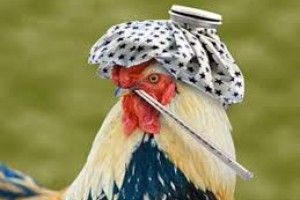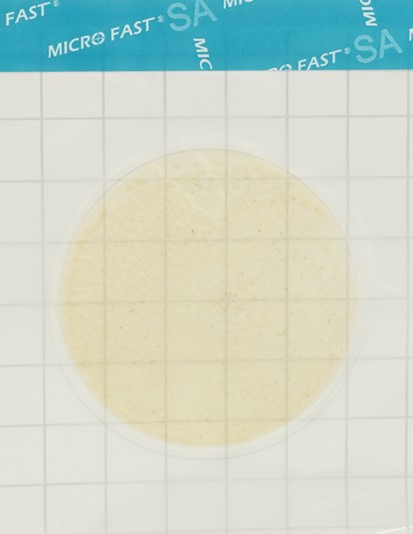The price of poultry meat is growing due to the rise in the cost of feed additive components

Он отметил, что в 2022 году во всех сельскохозяйственных предприятиях страны выпустили 6,5 млн тонн птицы, что почти на 5% больше, чем годом ранее. В текущем году также сохраняется положительная динамика, по данным Минсельхоза.
«Себестоимость мяса птицы растет из-за удорожания компонентов кормовых добавок, например, соевого шрота, а также оборудования и расходников. В итоге производители вынуждены поднимать цены, чтобы операционная маржа позволяла им работать дальше. Рентабельность птицеводов достаточно невысокая: она все еще не выходит за пределы 5-8%», – заявил Хижняк.
К тому же, по его словам, проблемы с грузоперевозками и дорогие горюче-смазочные материалы, в первую очередь бензин, увеличивают логистические затраты, что также сказывается на цене.
“However, year by year we have to compare prices taking into account inflation, and if inflation is discounted, it turns out that the price has not risen so much. In addition, the ruble has recently depreciated significantly against world currencies,” Khizhnyak said.
Also, the observed price increase in 2023 may be due to a number of industry-specific reasons, the expert added.
“So, first of all, it's bird flu . In the first half of 2023, 55 outbreaks of this disease were recorded in 24 regions. Accordingly, due to bird flu, the market could have a shortage of chicken MEAT. Although, according to Rosstat, a decrease in meat production was recorded only in the last month, in June, but in general, an increase of almost 2% was noted over the six months,” Khizhnyak concluded.
Earlier it became known that the price of chicken meat in the Russian Federation set a historical record - 196.93 rubles per 1 kg. Independent experts say that the increase in prices in retail chains is even greater - an average of 270 rubles per kg.
Read together with it:
- Эксперт прогнозирует резкое увеличение цен на куриное мясо до 50% к Новому годуПо его данным, это связано с удорожанием кормов и увеличением финансовой нагрузки на птицеводческие предприятия. Также он отметил влияние высоких тарифов на электроэнергию и логистику, а также возможные изменения налоговой политики, включая повышение НДС до 22%. Панченко добавил, что традиционно к Новому году наблюдается подорожание продуктов, но после праздников цены обычно корректируются..........
- Цены на колбасные изделия поднимутся на 5-10% к Новому годуОсновные причины повышения цен включают рост затрат на сырье, увеличение тарифов, подорожание логистики и упаковочных материалов. В 2025 году наблюдалась высокая волатильность на рынке: цены на свинину выросли на 12-15%, говядину — на 10-14%, а мясо птицы — на 8%. Это приводит к значительному увеличению себестоимости, особенно в премиальном сегменте, где используются дорогие ингредиенты. Производи...
- ФАО: мировые цены на продовольствие снижаются второй месяц подрядДжим Вайкофф Среднее значение Индекса цен на продовольствие ФАО в октябре составило 126,4 пункта, снизившись с пересмотренного значения в 128,5 пункта в сентябре, что представляет собой небольшое снижение в годовом исчислении и на 21,1% ниже пикового значения в марте 2022 года. Лидером снижения стал сахар: его субиндекс упал на 5,3% до самого низкого уровня с декабря 2......
- Experts predict further increases in chicken and egg prices in Russia.Key factors driving price increases: Increasing VAT from 20% to 22% Increased feed costs due to crop failure in the regions Rising prices for fuel and energy resources Seasonal increase in the cost of keeping poultry in winter Expert forecasts: Financial analyst Tatyana Volkova expects chicken prices to rise 1......
- Сельское хозяйство США в тревоге из-за торгового соглашения с АргентинойСельскохозяйственный и животноводческий сектор в Соединенных Штатах , который является одной из баз поддержки, с которой президент Дональд Трамп вернулся в Белый дом, чувствует себя преданным торговым соглашением между Вашингтоном и Буэнос-Айресом . Владельцы скотоводческих хозяйств утверждают, что соглашение позволит расширить импорт аргентинской говядины в США, что напрямую вредит их производств...
- Чили: ChileMEAT предупреждает об убытках более чем в 6 миллиардов долларов из-за остановки производства говядиныЧилийская ассоциация мясоперерабатывающих и холодильных предприятий (ChileMEAT) выпустил официальное предупреждение, выражающее глубокую обеспокоенность критической ситуацией в южной части страныКризис стал результатом 15 дней непрерывной мобилизации должностных лиц, объединенных в Национальную ассоциацию должностных лиц сельскохозяйственной и животноводческой службы (Asfusag) , что привело к полн...
- Спрос на мясо в США останется высоким до 2026 годаВ интервью Valor Agregado на Radio Carve Мартинес отметил, что сейчас все с нетерпением ждут, что в конечном итоге произойдет в отношениях североамериканской страны с Бразилией и Аргентиной в связи с возможным снижением тарифов и дополнительной квотой в 60 000 тонн соответственно. Что касается дополнительной квоты Аргентины, которая увеличивается с 2......





























































